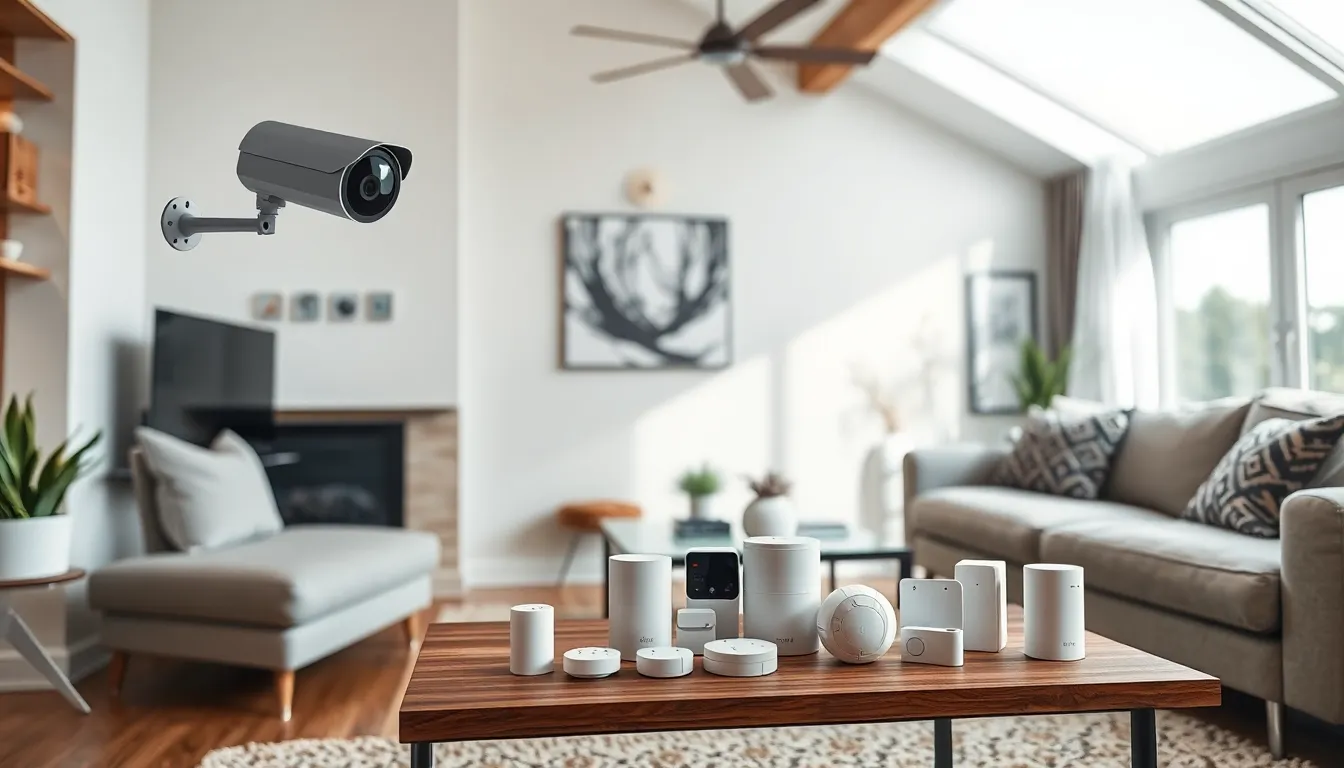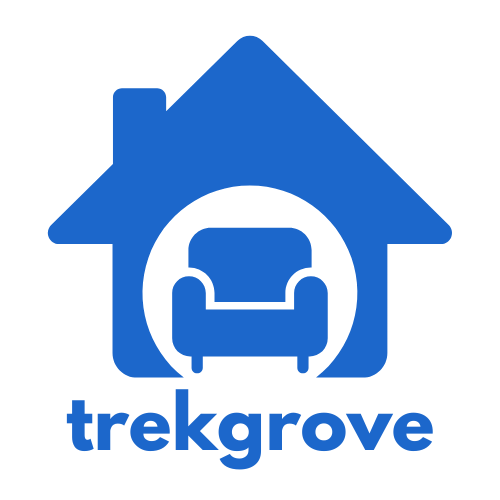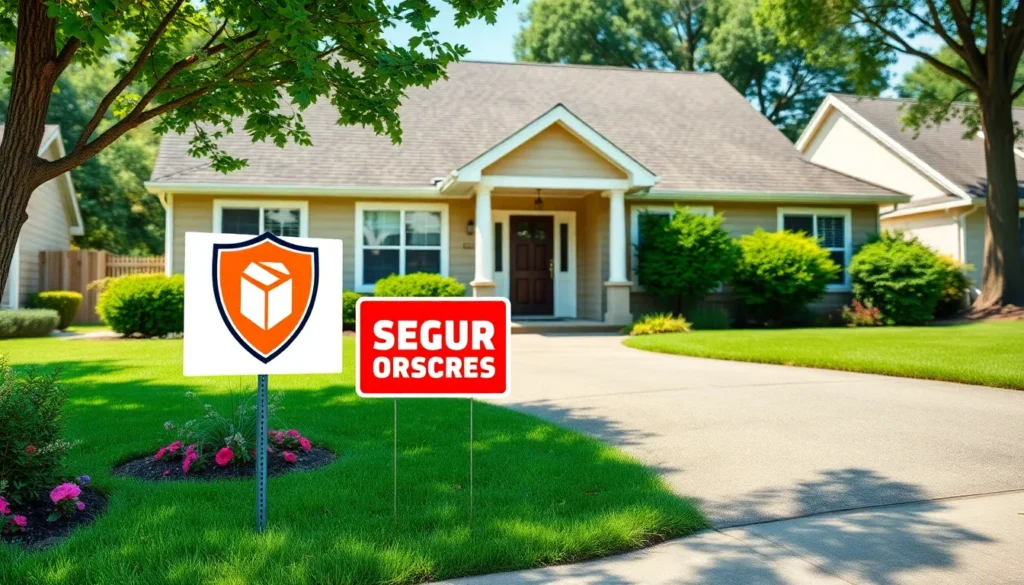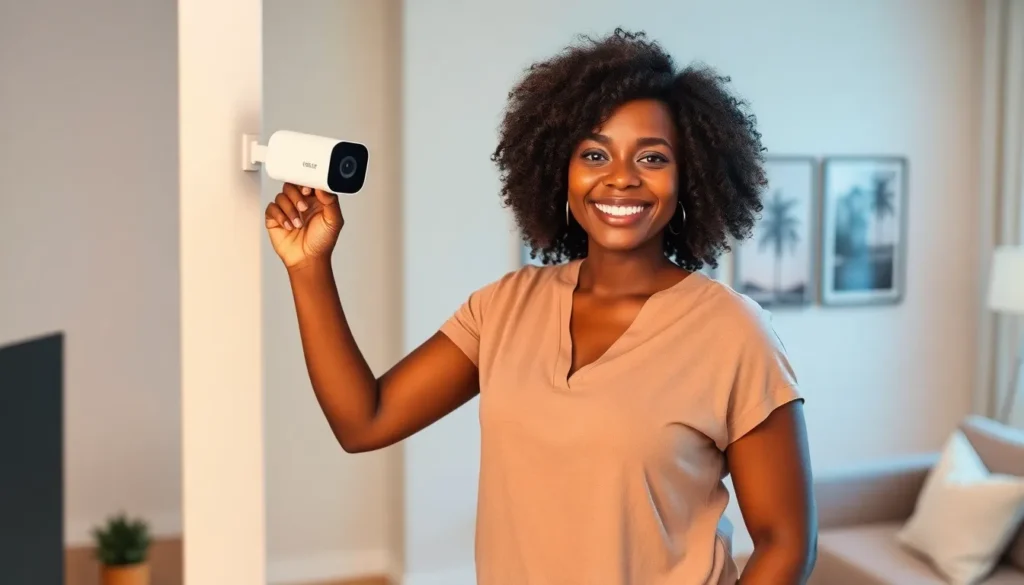In an unpredictable world, home security has become a top priority for many. With rising concerns about burglary and property crime, homeowners are increasingly seeking effective ways to protect their loved ones and belongings. A solid security system not only deters potential intruders but also provides peace of mind.
From smart technology to traditional locks, the options for enhancing home security are vast and varied. Understanding these choices can empower homeowners to make informed decisions that best suit their needs. Whether it’s installing a state-of-the-art alarm system or simply reinforcing doors and windows, every step taken towards securing a home is a step towards safety.
Table of Contents
ToggleOverview of Home Security
Home security involves measures taken to protect residential properties from intruders and property crime. It encompasses a variety of strategies and technologies aimed at safeguarding homes and their occupants. Effective home security not only deters crime but also contributes to a sense of safety and well-being.
Types of home security solutions include:
- Alarm Systems: These systems act as deterrents and provide alerts when an unauthorized entry occurs. They consist of sensors, control panels, and monitoring options.
- Surveillance Cameras: Visible cameras enhance security by deterring potential intruders. They can be monitored remotely via smartphones and other devices, providing live feeds and recorded footage.
- Smart Home Devices: Smart locks, doorbell cameras, and security lights integrate with home networks. They offer advanced features such as remote locking and alerts for unusual activity.
- Traditional Locks: High-quality deadbolts and padlocks remain fundamental elements of home security. Upgrading locks can significantly increase resistance against break-ins.
- Motion Sensors: These devices detect movement and trigger alerts or lights. They serve as effective barriers to unauthorized entry when combined with other security measures.
Understanding these options allows homeowners to select systems that fit their specific requirements, contributing to enhanced safety and peace of mind. Investing in comprehensive home security measures significantly reduces the risk of burglary and provides reassurance for occupants. Regular assessments and updates to security systems ensure ongoing protection against evolving threats.
Types of Home Security Systems

Home security systems vary widely in technology and functionality. Each type offers unique advantages tailored to different security needs.
Monitored Security Systems
Monitored security systems connect to a professional monitoring service, offering 24/7 surveillance and immediate response. These systems typically include equipment such as alarms, sensors, and cameras. When an alarm triggers, the monitoring service alerts homeowners and law enforcement. According to a study by the Electronic Security Association, homes with monitored systems face a significantly lower risk of burglary. Popular features often include remote access, allowing users to control and monitor their systems via mobile devices.
Unmonitored Security Systems
Unmonitored security systems operate independently, alerting homeowners through local alarms without external monitoring. Common components include motion sensors, window and door alarms, and surveillance cameras. While these systems provide basic security, immediate assistance isn’t available if alarms trigger. Cost-effective and easy to install, unmonitored systems require homeowners to take action during an alert. Individuals often prefer these systems for their simplicity and affordability, making them suitable for those on a budget.
Smart Home Security Features
Smart home security features streamline and enhance residential safety measures through technology. Homeowners benefit from advanced monitoring and control options that increase security and convenience.
Cameras and Surveillance
Cameras and surveillance systems offer real-time monitoring and recorded footage of residential areas. These systems include:
- HD Cameras: High-definition cameras provide clear images, enabling the identification of intruders.
- Night Vision: Infrared technology allows for visibility in low-light conditions, ensuring security around the clock.
- Motion Detection: Motion sensors trigger alerts and recording when movement is detected, enhancing responsiveness.
- Remote Access: Homeowners can view live feeds and recorded footage via mobile apps from any location, providing peace of mind.
- Two-Way Audio: Many cameras come equipped with audio capabilities, allowing homeowners to communicate directly through the device.
Smart Locks and Doorbells
Smart locks and doorbells enhance entry security and convenience for homeowners. Key features include:
- Keyless Entry: Smart locks enable entry through codes or mobile apps, eliminating the need for physical keys.
- Real-Time Alerts: Notifications alert homeowners when doors open, providing instant awareness of activity.
- Temporary Access Codes: Homeowners can create unique codes for guests or service personnel, allowing controlled access.
- Video Doorbells: Smart doorbells offer video feeds and communication options, allowing homeowners to see and speak to visitors before opening the door.
- Integration with Smart Systems: Many smart locks and doorbells integrate with existing home automation systems, allowing seamless control alongside other smart devices.
These smart security features contribute to a layered defense, making it harder for intruders to successfully breach residential properties.
DIY vs. Professional Installation
Homeowners face a pivotal decision when securing their properties: DIY installation or professional installation. Each option presents distinct advantages and considerations.
DIY Installation
- Cost-effective solutions: DIY systems often cost 30% to 50% less than professional installations. Homeowners save on labor costs and can choose budget-friendly equipment.
- Customization options: DIY installation allows for tailored setups. Homeowners can select components that meet their specific security needs without limitations.
- Flexibility in timing: Homeowners control the installation timeline. They can install systems at their convenience rather than adhering to a professional’s schedule.
- Simplicity of setup: Many DIY systems come with user-friendly instructions. Homeowners with basic technical skills can successfully assemble and configure these security systems.
Professional Installation
- Expertise and assurance: Professional installers offer extensive experience. Their knowledge guarantees optimal placement and configuration of security equipment, enhancing overall system efficiency.
- Comprehensive assessment services: Professionals assess properties for vulnerabilities. They identify the best security measures tailored to the specific layout and environment of each home.
- Warranty coverage: Most professional services provide warranties on both installation and equipment. Homeowners gain peace of mind knowing their system is covered against defects or errors.
- Ongoing maintenance and support: Professional services often include regular maintenance checks and customer support. Homeowners benefit from expert help in troubleshooting and upgrading systems as needed.
Choosing between DIY and professional installation depends on personal preferences, budgets, and required security levels. Each option can effectively enhance home safety when aligned with individual needs.
Home Security Tips for Homeowners
Homeowners can implement several effective strategies to enhance security and protect properties from intruders.
- Install High-Quality Locks
Invest in deadbolts and smart locks. Deadbolts provide physical resistance, while smart locks offer keyless convenience and remote access.
- Utilize Alarm Systems
Choose a monitored alarm system for continuous surveillance. Monitored systems notify authorities instantly during a break-in, while unmonitored systems trigger local alarms.
- Implement Surveillance Cameras
Install HD security cameras around the perimeter. These cameras deter intruders, and provide recorded evidence in case of incidents.
- Incorporate Motion Sensors
Use motion-activated lights and sensors. These devices illuminate dark areas, making it difficult for trespassers to approach undetected.
- Secure Windows and Doors
Reinforce entry points with window locks, security film, and door jammers. Secure windows prevent unauthorized entry and reinforce the overall security of the home.
- Maintain Exterior Lighting
Install exterior lights with timers or motion detectors. Well-lit exteriors decrease hiding spots, making properties less appealing to intruders.
- Create a Neighborhood Watch
Collaborate with neighbors to establish a community watch program. Together, residents can monitor suspicious activity and enhance the collective security of the area.
- Limit Social Media Sharing
Avoid posting vacation plans or sensitive information online. Sharing location details can alert potential burglars to an empty home.
- Regularly Test Security Systems
Frequently test alarms and camera systems to ensure operation. Regular checks identify potential issues, keeping security systems reliable.
- Consider Professional Security Assessments
Consult security experts for thorough assessments. Professionals identify vulnerabilities and provide tailored recommendations, enhancing overall home security.
By following these practical tips, homeowners can create a safer living environment and reduce the risk of burglary and property crime.
Investing in home security is crucial for safeguarding one’s property and ensuring peace of mind. With a variety of options available homeowners can tailor their security systems to fit their unique needs. Whether opting for advanced smart technology or traditional methods each choice plays a significant role in enhancing safety.
Regular evaluations and updates to security measures are vital in adapting to new threats. By prioritizing home security and implementing effective strategies individuals can create a more secure living environment. Ultimately every step taken towards better security contributes to a safer community and a more confident lifestyle.


